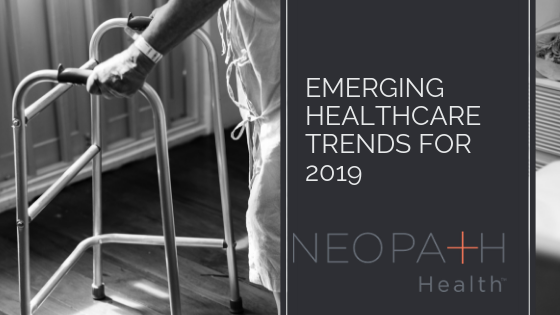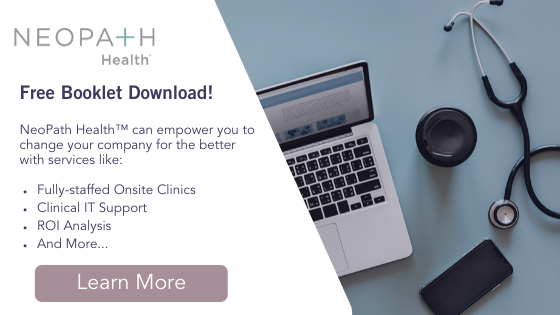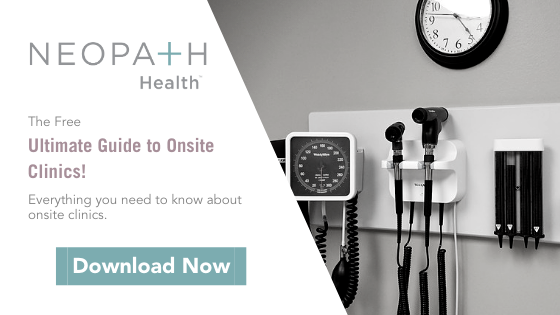The critical focus and innovation boom in the healthcare sector won't be slowing in 2019. Science and technology are continuing to push forward exciting, new medical advancements, and a focus on greater returns for patients is opening doors to a higher quality of care. Here are some emerging healthcare trends in 2019 to watch for.

Cutting-edge Technology Will Continue to be a Game-changer
It's hard to predict what new, unthought-of technology will emerge since the very nature of tech is expanding into previously unexplored potential. So in that arena, the possibilities are as endless as the imagination of innovative geniuses. However, we can predict how some of the current technologies will continue to adapt and influence the healthcare sector.
According to an article by John Stevens in popular tech blog, The New Web, the AI (Artificial Intelligence) health market is projected to grow more than 10 times within the next five years. AI will increase its reach into diagnostic imaging, drug discovery, healthcare communication, risk analytics, and error reduction to name just a few. The goals of AI expansion are to increase accuracy, knowledge, and treatment possibilities within the medical realm.
Digital healthcare is also expected to leap forward. Mobile Digital Healthcare, or mHealth for short, is expected to spread. This includes Telemedicine (ability to call and speak to a provider) as well as an expanded ability for patients to communicate with providers through additional means such as email, text, chatbots, and communication apps. mHealth will also spread into app development specifically for health purposes, whether that be medical facilities providing an app to their patients to retrieve their records and communicate with providers or the already extremely popular apps used for personal health and wellness combined with new and improved options for wearable devices that communicate with the apps.
Behind the scenes in healthcare technology is the expansion of Cloud Computing and Data Analytics. The cloud has increased healthcare facilities options and ability to move previously manual records over to the electronic domain. This allows information to be stored more securely and backed up more generously, without the facilities themselves having to house massive server farms or hire expensive tech teams.
 One of the additional impacts of expanding tech options and cloud computing within healthcare is their ability to tap into the world of Big Data/Data Analytics. With tests being administered using tech that records and stores information digitally, the increase in healthcare data is expanding exponentially allowing healthcare providers to have a more accurate, overall picture of your health record and predict your needs as a patient, as well as the ability to utilize real data to better understand certain ailments and develop new treatments.
One of the additional impacts of expanding tech options and cloud computing within healthcare is their ability to tap into the world of Big Data/Data Analytics. With tests being administered using tech that records and stores information digitally, the increase in healthcare data is expanding exponentially allowing healthcare providers to have a more accurate, overall picture of your health record and predict your needs as a patient, as well as the ability to utilize real data to better understand certain ailments and develop new treatments.
Shift to Value-Based Care Will Gain Steam
According to Forbes Top 8 Healthcare Predictions for 2019, "By the end of 2019, up to 15% of global healthcare spending will be tied in some form with value/outcome based care concepts." A value-based care model means that providers will be paid based on the outcome or success of treatment. This moves away from the current fee-for-service model which can, at its worst, lead to unnecessary, expensive tests, referrals, and treatments.
This model comes with many challenges such as moving payment systems away from the prevalent FFS model, setting and upholding agreed-upon quality standards, and facilities’ ability to continue operating with less revenue and tighter margins. On the positive side, it is driving improvements in delivery of care standards and allowing patients to receive higher quality care typically at a lower overall cost.

This focus on value-based healthcare also includes expanded primary care options. A couple of these currently include Direct Primary Care (DPC) where patients receive direct care from a solo practitioner or organization and pay them a flat-fee directly for their care and agreed-upon services, as well as Onsite/Near-site clinics which are dedicated to providing care to the workforce of a specific employer. Both of these models cut out the middleman of the gargantuan insurance agencies and focus on the relationship between patient/provider and quality of care.
Increased Accommodations for the Aging
By 2034, for the first time ever since the start of census, people over the age of 65 will outnumber those under 18 as the baby boomer generation starts inching into elderliness. There will be a massive strain on Medicare enrollment, as it is projected to increase by nearly 50 percent over the coming years.
The medical industry will need to expand exponentially for the elderly as not only will this be the largest generation to reach the golden years at once, but they are living longer than generations before them. Medical facilities such as clinics and senior living will need to expand. Treatments such as medication and medical devices and mobility equipment will need to be prepared for increased demand in all areas for the aging.

This expansion will be accompanied by an effort to create more "Silver Architecture" which refers to creating spaces with the elderly in mind. These places would be well-lit, quiet, easily accessible for wheelchairs and walkers, and safe both in security and general physical safety. Included will be an aim to broaden these requirements from places that are created specifically for the elderly into general public facilities as the vast but active and mobile baby boomer generation continues into older age.
.png?width=433&name=NeoPath_2019_logo_2color%20(1).png)



